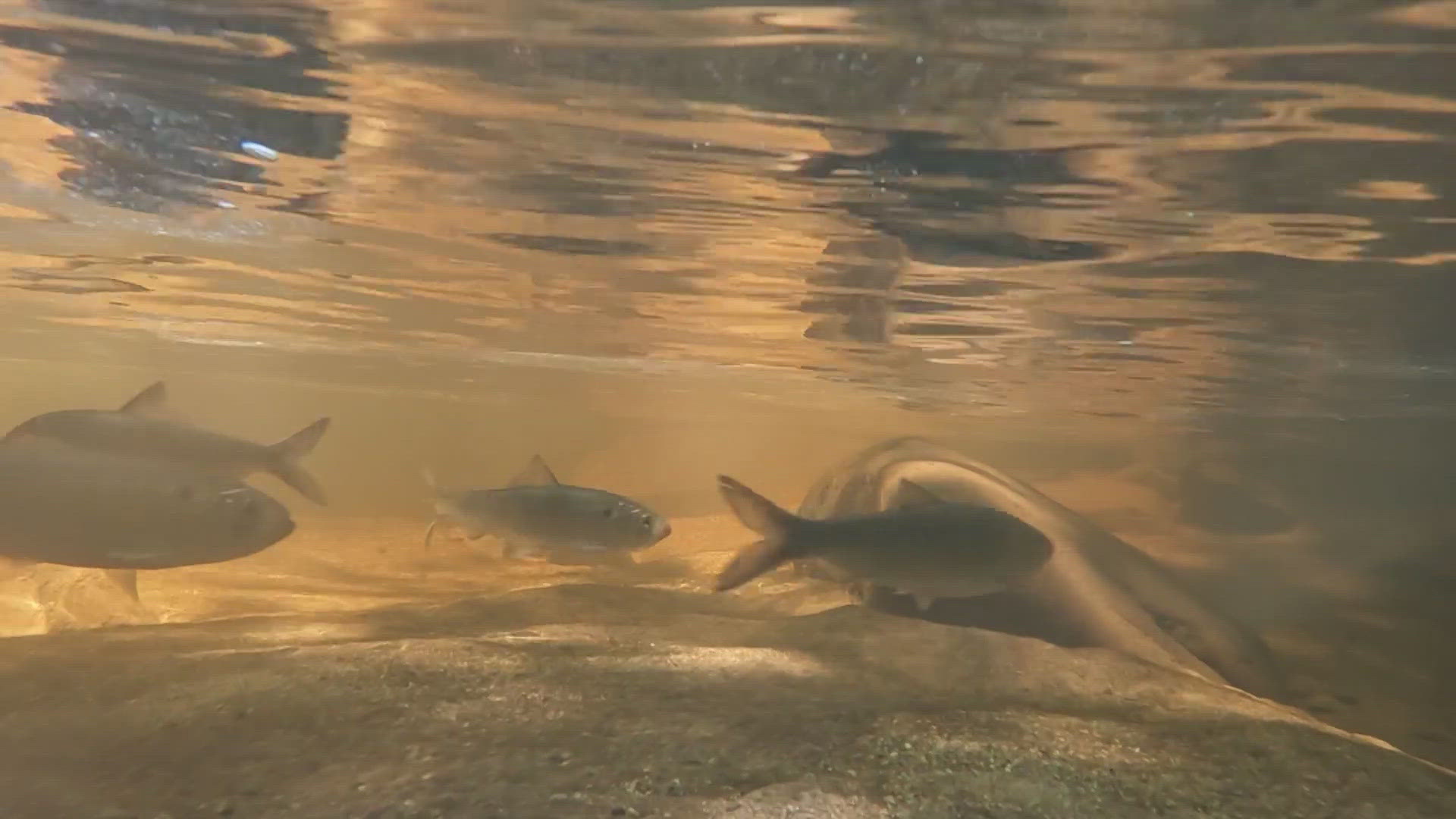WESTBROOK, Maine — Zach Whitener stood on the bank of Mill Brook and smiled.
He is a senior research associate with the Gulf of Maine Research Institute and a fish expert. He said his team was witnessing the tail end of the largest alewife migration seen in Maine in years.
"The numbers really were at their lowest in the late 90s, early 2000s, and have really started to come back," he explained to a group of about 15 onlookers. They, and another 15 interested residents and staff from the GMRI and the Presumpscot Regional Land Trust, joined the second annual "alewife walk" to witness the spectacle for themselves.
Mills Brook flows into the Presumpscot River, which flows into the Atlantic. All-told, the schools of alewives swimming by the group on Tuesday had spent four years in the ocean and then traveled 14 miles upstream, with just one mile to go before spawning the next generation.
Alewives are in the herring family, distinguishable by their large eyes and heftier stomachs, Whitener said.
He explained that, across the Presumpscot, Kennebec, and Penobscot Rivers, migration numbers began exploding in the recent past from the 10s of thousands to millions. He attributes much of that boom to attempts to aid the Atlantic salmon, which is considered endangered in the Gulf of Maine by the federal government.
"Because Atlantic salmon have been listed as endangered, it gets a lot of money; it gets a lot of interest in dam removal, habitat improvement," Whitener said. "Unfortunately, Atlantic salmon aren’t doing so hot despite all of the work that’s been done. But alewives can take advantage of that and have done incredibly well."
That's welcome news for the whole ecosystem. Most birds, mammals, and other fish big enough to eat an alewife would love one for lunch. And with a habitat range reaching Florida, Whitener said, they're climate resilient.
Though not as storied as the mighty salmon, the alewife was revered in the hearts of the walking group, which "oooh'd" and "ahhh'd" when they caught a glimpse along their route. Brenna Crothers, with the land trust, also held them in high regard.
"They're like the underdog," she smiled. "They don't leap with the grace of salmon. No, they are a determined scramble up these waterfalls."
And for the future, The GMRI is using something called environmental DNA. Research associate Sam Bangs collected water to test back in the lab, explaining it could reveal which animals had recently been in the area and left genetic evidence behind.
"[It] adds another layer of certainty, because DNA doesn't lie," she told the group.
That means they could use more than their nets to study migrations, perhaps leaving more time to appreciate future walks like Tuesday's.

